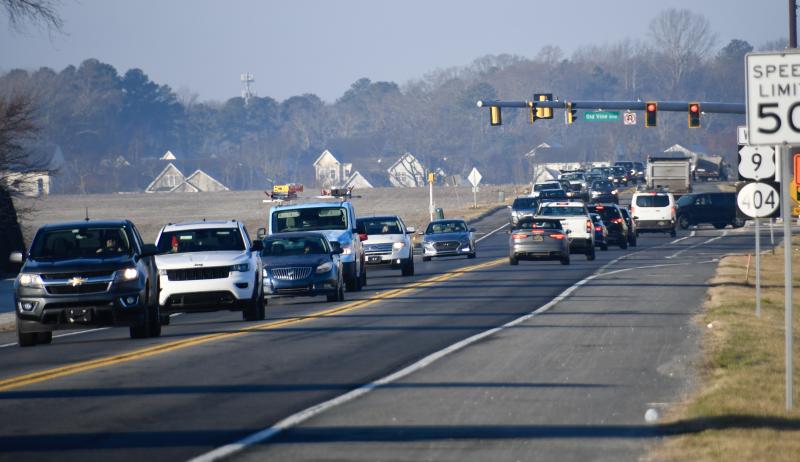Sussex, state plan more coordination on development
Sussex County Council and state transportation officials met recently and agreed to work together more to improve coordination of development projects.
The discussion came during a three-hour presentation March 4, by Delaware Department of Transportation Secretary Shanté Hastings and her staff to Sussex council and the county’s planning & zoning commission.
County officials said there have sometimes been conflicting decisions on how to phase in road improvements funded by developers, and there needs to be better coordination for projects in and around the state’s transportation improvement districts.
TIDs are areas established by the state in which build-out of housing and commercial projects are projected, and necessary road improvements are planned by the state and funded by developers. In Sussex County, there are districts in Milford and Lewes. Others are being developed around Milton and Roxana.
Councilman John Rieley suggested the boundaries of districts be expanded to encompass nearby land where development is also occurring that benefits from the work of the district but does not contribute financially. There was also discussion of making a countywide district.
Hastings said the state would discourage a broad district because it would be extremely complicated to plan, and frequent changes to districts would also be difficult. But she said the state would be interested in discussing with county officials how to improve the districts.
It was decided at the March 4 meeting that the county and state will work together to coordinate phasing of road improvements and incorporate them in conditions of approval before the county passes projects.
In some cases, particularly large projects, portions of road improvements must be phased in as the development expands, usually based on the number of building permits issued. An example is adding turning lanes after a certain number of permits are issued. In the case of the Vineyards housing and commercial project off Route 9 near Lewes, construction is paused until Nassau Commons Boulevard adjacent to the site is widened and a traffic light is installed at the intersection of that road with Route 9.
Developers have to fund improvements to roadways in front of their properties and off-site intersections that their projects will affect, Hastings said. When asked if the state could require additional work, she said the state would have to change regulations. That would require discussions with developers and public hearings before any vote to make changes.
County officials also questioned whether Sussex County is getting its fair share of state transportation funds.
In 2023, $3.2 billion was spent statewide, Hastings said. That includes $1.55 billion, or 49%, in New Castle County; $570 million, or 18%, in Kent County; and $1.06 billion, or 33%, in Sussex County.
“It seems to me Sussex County might have more road miles, yet we’re not receiving as much funding. Plus, we have more pressing needs for road improvements as we grow,” Rieley said. “It almost seems like an inequity to me that we are not seeing as much funding as New Castle.”
The state has to balance and prioritize the needs of all three counties, taking into account growth, safety, intermodal transportation, the environment, public transit and economic development concerns, Hastings said.
She urged the county to propose infrastructure projects for consideration by the state.
County Administrator Todd Lawson said the county is trying to discourage development of buildings and stormwater ponds along Route 9, where the road will be widened in the future.
“We know that is one of the greatest pressure points in the entire county on a daily basis, and it is exacerbated during the seasonal traffic,” he said.
Hans Medlarz, a county engineer, suggested the state work more closely with the county on drainage projects related to road work.
He said the state is only responsible for drainage related to its road projects, while the county has a broader responsibility for drainage issues. He said the county’s work could reduce the scope and cost of state road drainage projects, and some could move more quickly, with fewer rights of way required.
“The department is, let’s say, very reluctant to disengage on the stormwater side,” Medlarz said. “We feel it would help both entities. It would allow us to gain some control over some of the drainage issues which we are wrestling with. You deal with the on-site, i.e. right-of-way drainage, while we deal with the big picture. Please consider us a partner in the future. We’d be happy to assist on that particular issue.”
“I would be happy to engage with you on that,” Hastings said. “Any time that we can collaborate to jointly solve problems, we’re all in.”










































